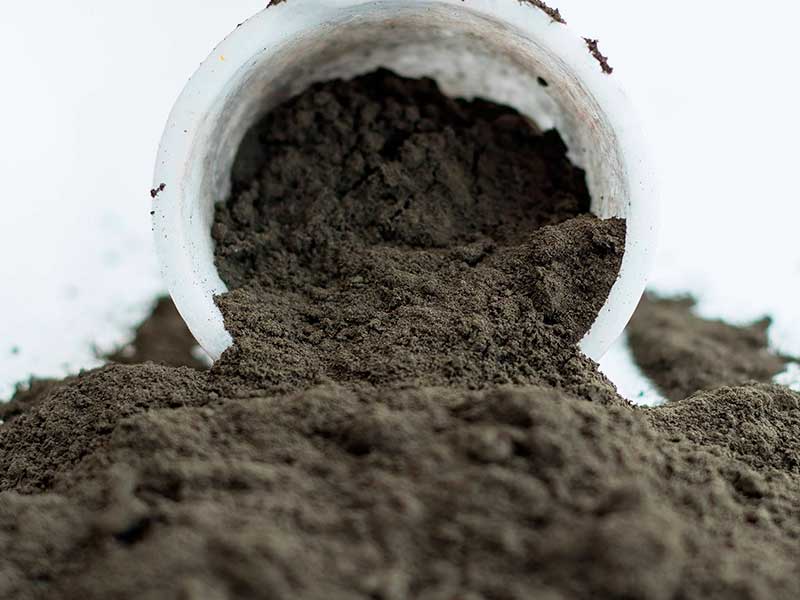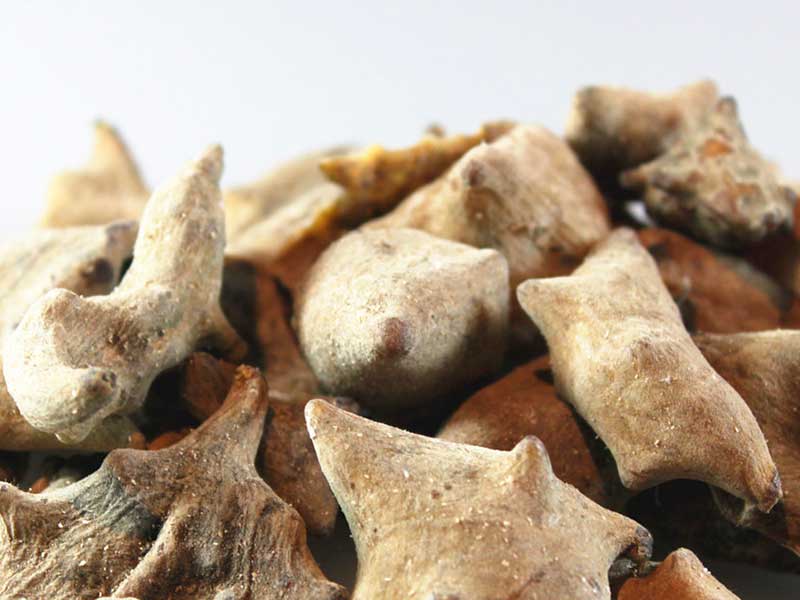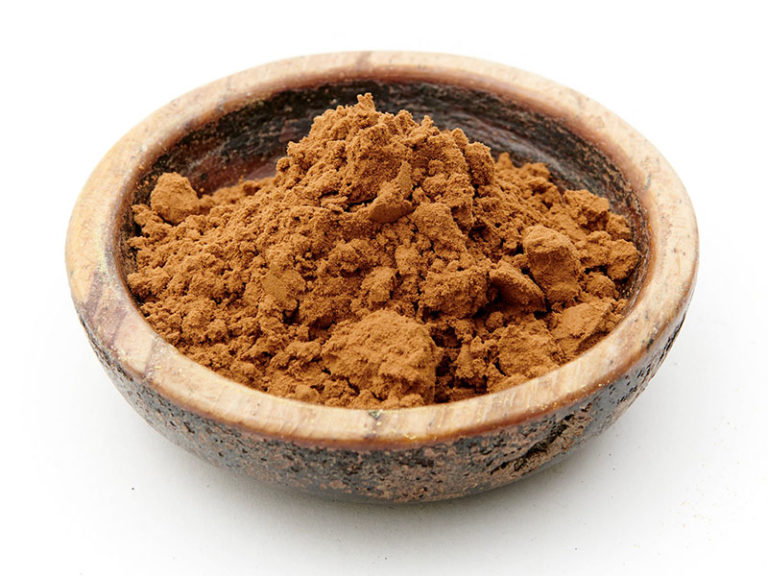GALLNUT
Botanical Name:
Quercus Infectoria
Common name:
Oak Tree Fruit
Other Name:
Manjakani, Majuphal
Part Used:
Dried Fruits
Uses:
Textile dyeing, medical purposes.

Product Descriptions:
Gallnut is a fruit found on oak trees that was traditionally used as a medicine, but nowadays is used to dye textiles.
Known as Manjakani or Quercus infectoria in Malaysia, these gallnuts are native to Greece and Asia Minor. Gallnuts contain the highest amount of naturally occurring tannins: Gallotannin, ellagic acid, and glucose. The primary colouring component of gallnut is ellagic acid. This substance is extracted by grinding the gallnuts into powder and heated in water with other ingredients. Gallnuts can be used to dye any material, including cotton, silk, and wool, creating dark colors by adding madder or indigo.
Known as Manjakani or Quercus infectoria in Malaysia, these gallnuts are native to Greece and Asia Minor. Gallnuts contain the highest amount of naturally occurring tannins: Gallotannin, ellagic acid, and glucose. The primary colouring component of gallnut is ellagic acid. This substance is extracted by grinding the gallnuts into powder and heated in water with other ingredients. Gallnuts can be used to dye any material, including cotton, silk, and wool, creating dark colors by adding madder or indigo.
Dyeing Process:
(A) Pre Mordant 1 :- Pre-treat the material with alum 10% of fabric weight at 80°C for 60 mins.
(B) Dyeing :- Add the required amount of dye to the dye bath. PH of dye bath needs to be maintained at pH 5. If it’s higher than pH 5 add vinegar, if below pH 5, use lime or soda ash. Stir well to dissolve the dye. Add fabric to the dye bath and maintain at 90°C for 60-80 mins. We check all our natural dyes at 30% of fabric weight, you can amend the percentage as per lighter or darker shade required.
(C) Post Treatment :- Conduct soaping of the dyed material with non-ionic detergent (0.5gpl) at 50°C for 35 mins.
(B) Dyeing :- Add the required amount of dye to the dye bath. PH of dye bath needs to be maintained at pH 5. If it’s higher than pH 5 add vinegar, if below pH 5, use lime or soda ash. Stir well to dissolve the dye. Add fabric to the dye bath and maintain at 90°C for 60-80 mins. We check all our natural dyes at 30% of fabric weight, you can amend the percentage as per lighter or darker shade required.
(C) Post Treatment :- Conduct soaping of the dyed material with non-ionic detergent (0.5gpl) at 50°C for 35 mins.
